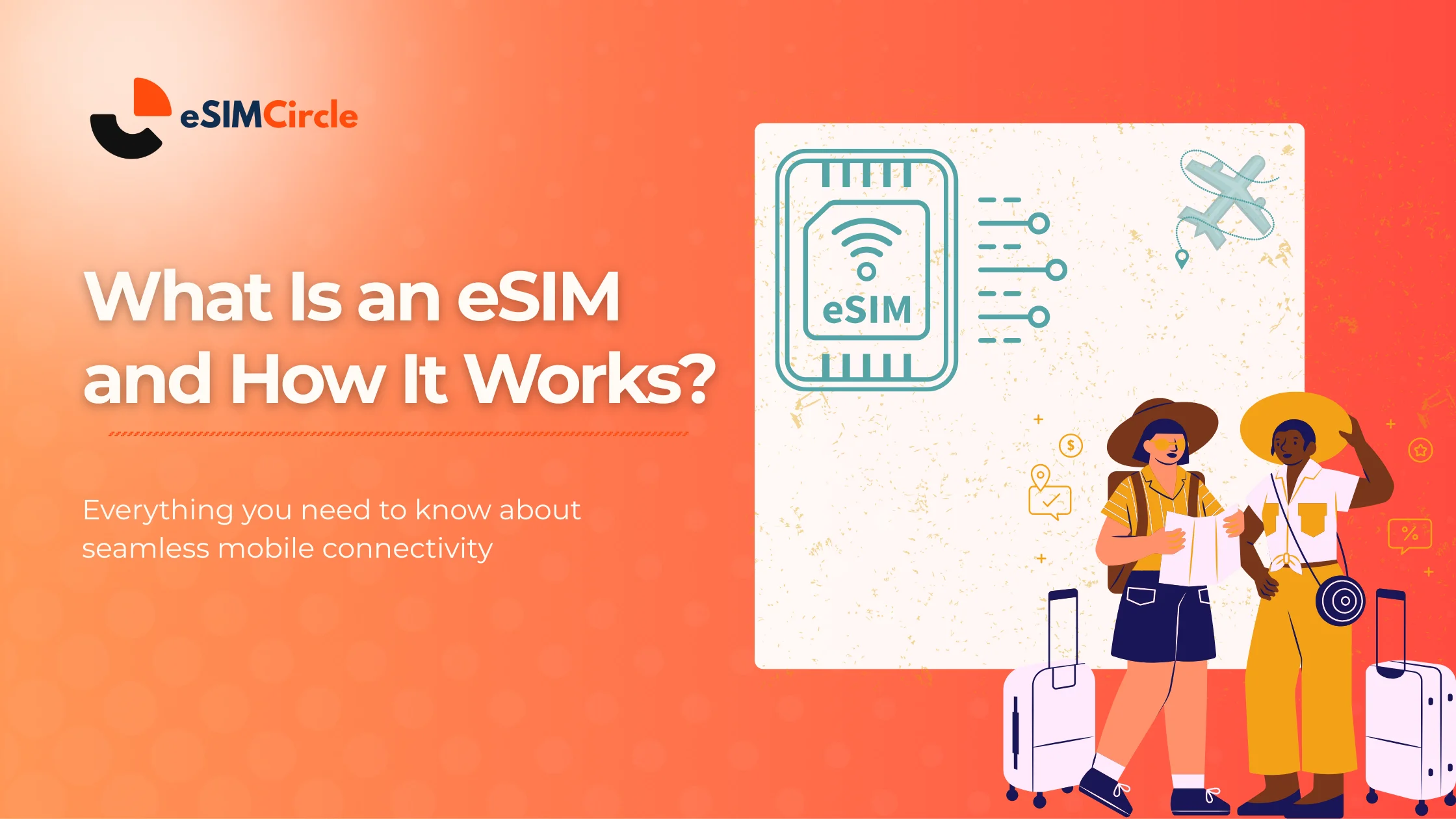Blog
What is an eSIM? A complete guide with 6 key facts on how it works [Updade 2025]
What is an eSIM? An eSIM, short for embedded SIM, is a digital version of traditional SIM cards that is integrated directly into your device. It allows remote activation of cellular plans without physical insertion, making it easy to switch carriers and plans, especially for travelers. More people are choosing to get an eSIM for its flexibility. If you’re curious about how does eSIM work, it acts as a digital SIM card or virtual SIM card. Here’s how to use eSIM effectively.
1. What is an eSIM and How Does It Actually Work?
Understanding eSIM means recognizing it as a new type of digital SIM card – a virtual alternative to the traditional physical SIM cards. Unlike physical SIMs that need to be inserted or removed, an eSIM is built into the device, allowing for remote programming. This innovation lets users easily switch carriers or plans without changing cards.
An eSIM stores subscriber information for cellular network access – like your provider’s profile – within the device. To get an eSIM, you download your network profile via a QR code, activation code, or app, facilitated by remote provisioning. When activated, it operates like a standard SIM card, enabling calls, texts, and data services but with the added advantage of remote management.
The move to virtual SIM cards benefits travelers and mobile professionals, simplifying the process of changing network providers globally. Many wonder how to get an eSIM and maintain connectivity anywhere.
2. eSIM vs. Physical SIM Cards: Key Differences Explained
Though both serve the main purpose of connecting your device to a cellular network, eSIMs and physical SIM Cards.
When comparing eSIMs and traditional physical SIM cards, it’s evident that both connect your device to a cellular network but differ significantly in design, functionality, and user experience. Below is a table highlighting the key differences between these two technologies:
| Feature | eSIM | Physical SIM Card |
|---|---|---|
| Design | Built directly into the device | A detachable chip placed into a slot |
| Flexibility | Easily switch carriers digitally | Requires physical card swap |
| Activation | Instant activation via app/email | May require store visit or mail delivery |
| Environmental Impact | Reduces plastic waste | Contributes to plastic waste |
| Profile Management | Holds several profiles on a single device | One profile per physical card |
| Device Compatibility | Not all devices support eSIM | Operates flawlessly with different devices |
| Internet Dependency | Activation depends on having internet access | No internet needed for insertion |
While physical SIM cards remain reliable and widely used, eSIMs offer a forward-thinking evolution that emphasizes convenience and adaptability. They streamline the user experience, especially for frequent travelers, by eliminating the hassle of swapping cards and allowing for quick changes in plans. As technology progresses, eSIMs are likely to become more prevalent, making them an essential option for modern connectivity.
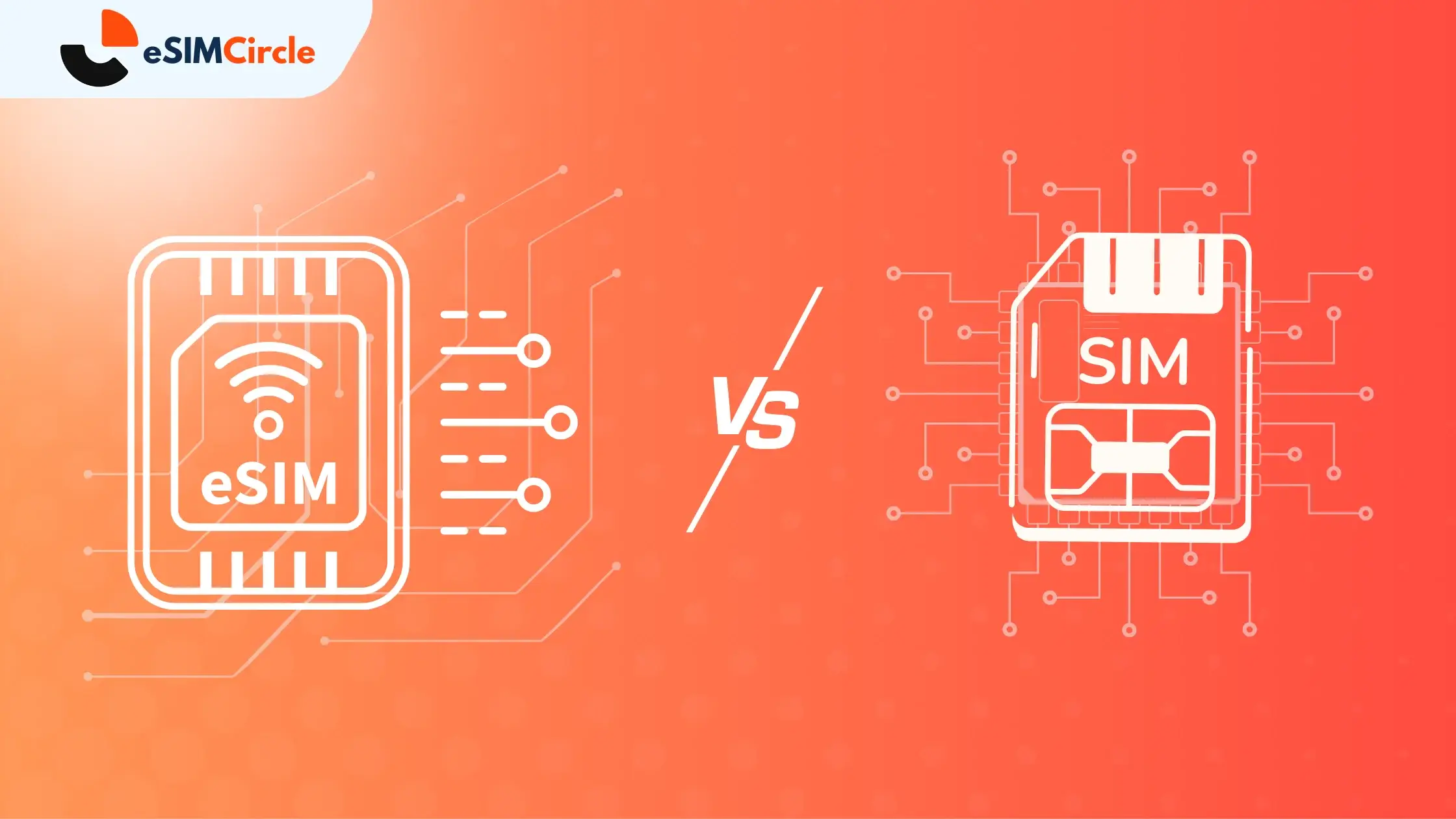
3. Top 7 Benefits of Using an eSIM
eSIM technology offers a host of advantages that make it an attractive option for anyone looking to simplify their mobile experience. From enhanced flexibility to better security, these benefits cater to a wide range of users, particularly those who are always on the move.
By embracing an eSIM, you can say goodbye to the days of fumbling with tiny SIM cards and hello to a more efficient way of staying connected. Let’s dive into the top seven benefits that highlight why eSIMs are becoming the preferred choice for modern connectivity.
- Remote activation: Unlike a physical SIM card, an eSIM card can be activated instantly via QR code or an app. Super convenient for travelers who want to get an eSIM and switch carriers without visiting a store
- Multiple profiles: A single digital SIM card lets you keep both personal and business numbers, or toggle between regional plans. No need to carry multiple devices or SIMs
- Enhanced security: Because the virtual SIM card is embedded in the device, it’s harder to clone or tamper with, lowering the risk of identity theft and fraud
- Cost savings: Flexible plans tailored to your needs, often cheaper and without long-term contracts. Helps avoid paying for unused data when you use eSIM
- Eco-friendly: By eliminating the need for plastic SIM cards, eSIMs reduce electronic waste, supporting sustainability efforts worldwide
- IoT integration: Perfect for smartwatches, connected cars, and other IoT devices where traditional slots are limited
- Reliability: Since eSIMs are built into the motherboard, they are more resistant to water damage or drops
Together, these benefits make what is an eSIM a revolutionary leap toward more flexible, user-friendly mobile connectivity.
4. Which Smartphones Support Digital SIM Cards?
When it comes to adopting eSIM technology, not all devices are created equal, and compatibility plays a crucial role in whether you can take advantage of this innovative feature. Most modern smartphones from leading manufacturers now support eSIMs, but it’s important to check your specific model to ensure it meets the requirements. Apple was one of the early adopters, with devices like the iPhone XS series and later models fully supporting eSIM functionality.
On the Android side, Google Pixel phones have been at the forefront, offering robust eSIM support since the Pixel 2. Other brands, such as Samsung, have rolled out eSIM capabilities in select models like the Galaxy S20 and beyond, while Motorola and OnePlus have also started incorporating this technology in their flagship devices.
If you’re wondering whether your phone supports eSIM, you can quickly check the full list of Supported Devices here. This tool makes it easy to confirm compatibility before you get an eSIM or switch providers.
Beyond smartphones, eSIM support extends to tablets and other gadgets, including iPads starting from the 2018 models and certain Windows laptops from manufacturers like Microsoft and Lenovo. However, support isn’t universal; older devices or budget-friendly models might lack eSIM hardware, requiring users to stick with physical SIMs.
When shopping for a new device, look for certifications like GSMA eSIM compatibility or check the manufacturer’s specifications. Keep in mind that while many carriers worldwide support eSIM activation, availability can vary by region, so it’s wise to verify with your provider. As eSIM technology continues to gain traction, more devices are expected to include this feature, making it easier for consumers to embrace a SIM-free future.
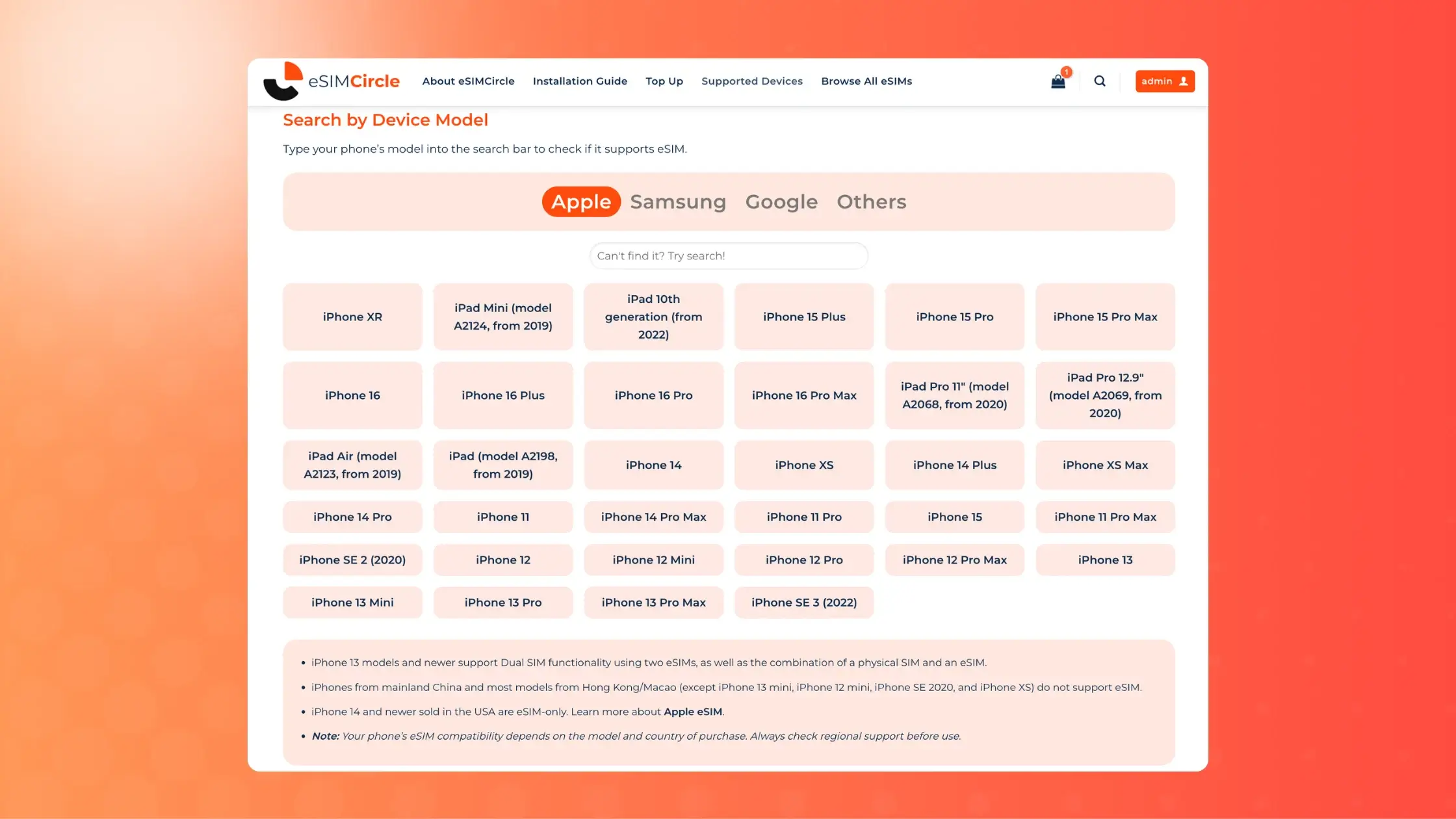
5. Steps to Get an eSIM for Your Device
Getting an eSIM for your smartphone or device involves a few straightforward steps. Whether through your local carrier, international providers, or specialized services like eSIMCircle, there are multiple options to explore.
5.1 Getting an eSIM from a Local Provider
Local providers specialize in eSIM technology and network services tailored specifically to their region. One of the primary advantages of using local providers is their extensive knowledge of the local market dynamics, which can lead to better connectivity and more reliable service quality.
They often offer plans that cater specifically to the needs of residents or frequent visitors, ensuring that users have access to local data rates and coverage. Additionally, local providers may have partnerships with other regional services, enhancing the overall user experience.
However, there are several drawbacks to consider when purchasing an eSIM from a local provider. Many local providers may require Know Your Customer (KYC) verification, necessitating the submission of personal identification and other documentation, which can be a cumbersome process for some users.
Furthermore, they might impose contractual obligations that could complicate the purchasing experience, making it less flexible for those who prefer short-term solutions. Lastly, the pricing for eSIMs from local providers can often be relatively high compared to other options available in the market, potentially limiting affordability for some consumers.
5.2 Buying a Virtual SIM Card from an International Provider
International providers present a wide array of eSIM options designed to meet diverse travel needs and preferences. A significant advantage of choosing international providers is that many do not require KYC verification or long-term contracts, which simplifies the purchasing process considerably and makes it accessible to a broader audience. This flexibility allows users to quickly obtain eSIMs without the hassle of extensive paperwork.
Additionally, the pricing offered by international providers tends to be competitive, enabling users to find affordable plans that fit within their budgets. Many international providers also offer a variety of data packages suitable for different usage patterns, from short trips to extended stays.
On the downside, it’s important to recognize that some international providers may lack robust customer service support, which can be problematic if users encounter issues or need assistance. Moreover, certain providers might not offer essential features such as top-up options for extending your plan, which can limit usability.
Some international eSIMs could impose restrictions on the duration of usage, meaning users may have a fixed number of days before their service expires, potentially leading to inconvenience during travel.

5.3 eSIMCircle – The Best Travel eSIM with Unlimited Data
For travelers in search of reliable, flexible, and unlimited data plans, eSIMCircle is a top choice. Our prepaid eSIM data plans cover over 100 countries, including popular regions like Europe and Asia. With instant delivery via email, users can receive their eSIM immediately after purchase, allowing for quick setup within minutes – perfect for last-minute trips.
eSIMCircle offers a range of features to enhance your travel experience, including unlimited plans with customizable durations from 1 to 365 days, so you only pay for the time you need. The flexible top-up feature allows you to easily add more data whenever you’re running low, ensuring uninterrupted connectivity throughout your journey. Plus, our 24/7 customer and technical support team is always available to assist you, no matter where you are in the world.
With eSIMCircle, there’s no need for KYC or contracts, making activation hassle-free – no identity verification or paperwork required. Enjoy transparent pricing with no hidden fees or extra charges while using your eSIM. Additionally, you can purchase multiple eSIMs in one transaction, making it ideal for families or groups traveling together.
This approach highlights how eSIM technology is revolutionizing international travel and connectivity, making it easier than ever for digital nomads and business professionals to stay connected on the go.
6. Guide to Setting Up an eSIM on Your Smartphone
Activating an eSIM involves a few simple steps, but the process varies depending on whether you’re using an iOS device like iPhone/iPad or an Android device. Fortunately, modern smartphones have user-friendly interfaces that guide you through activation.
6.1 Activating an eSIM on iOS (iPhone/iPad) Using a QR Code
- Navigate to Settings → Cellular → Add eSIM → Scan QR Code
- Use your device to scan the QR code sent to you in an email
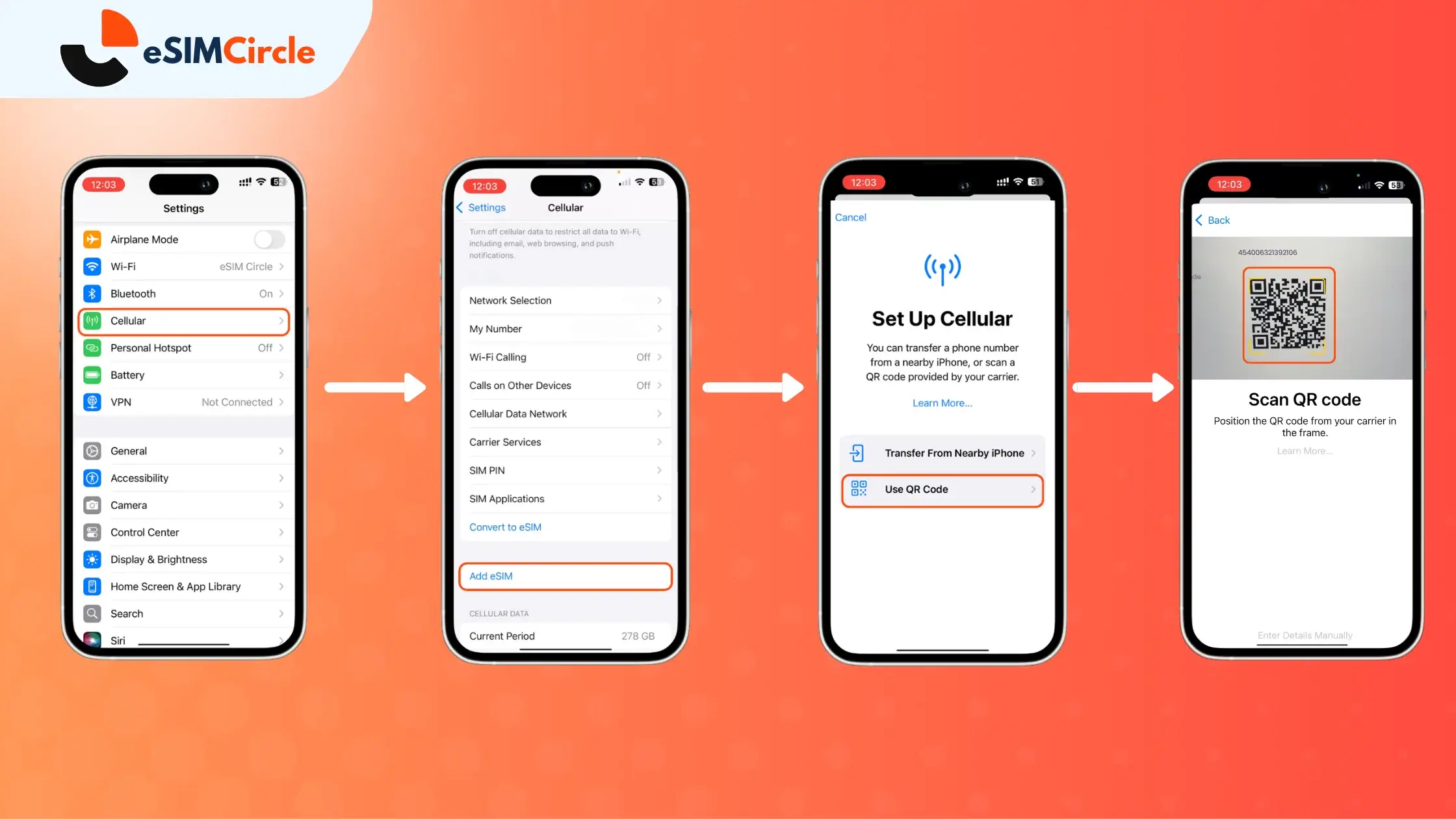
- Tap Continue, then Done to finish setup
- Choose a label for your eSIM (e.g., Travel) and tap Continue
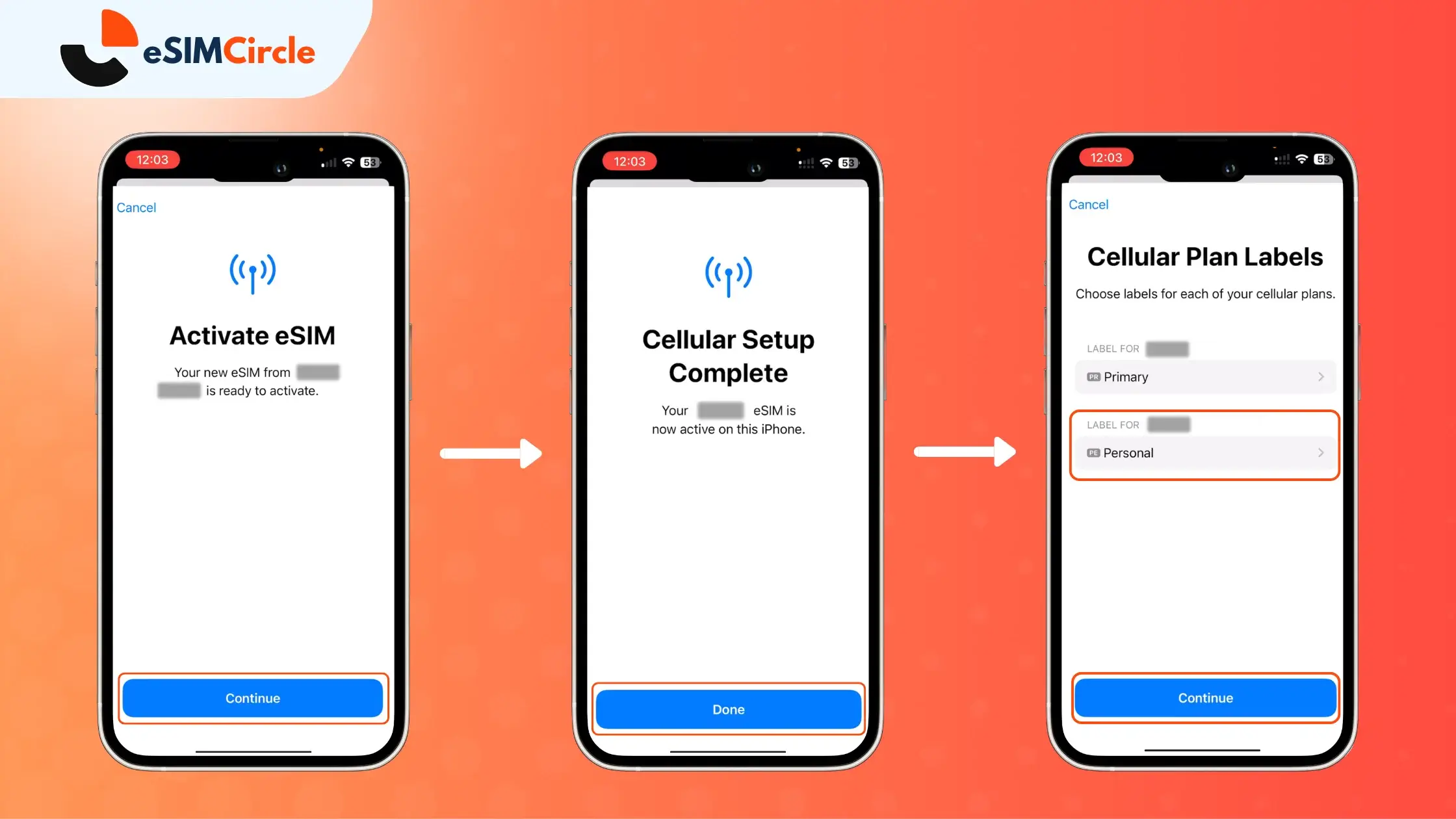
- If your plan includes a phone number, set it as your default line
- Select your eSIM for the preferred Cellular Data line, and then tap Done
- When abroad, turn on Data Roaming to start using your eSIM
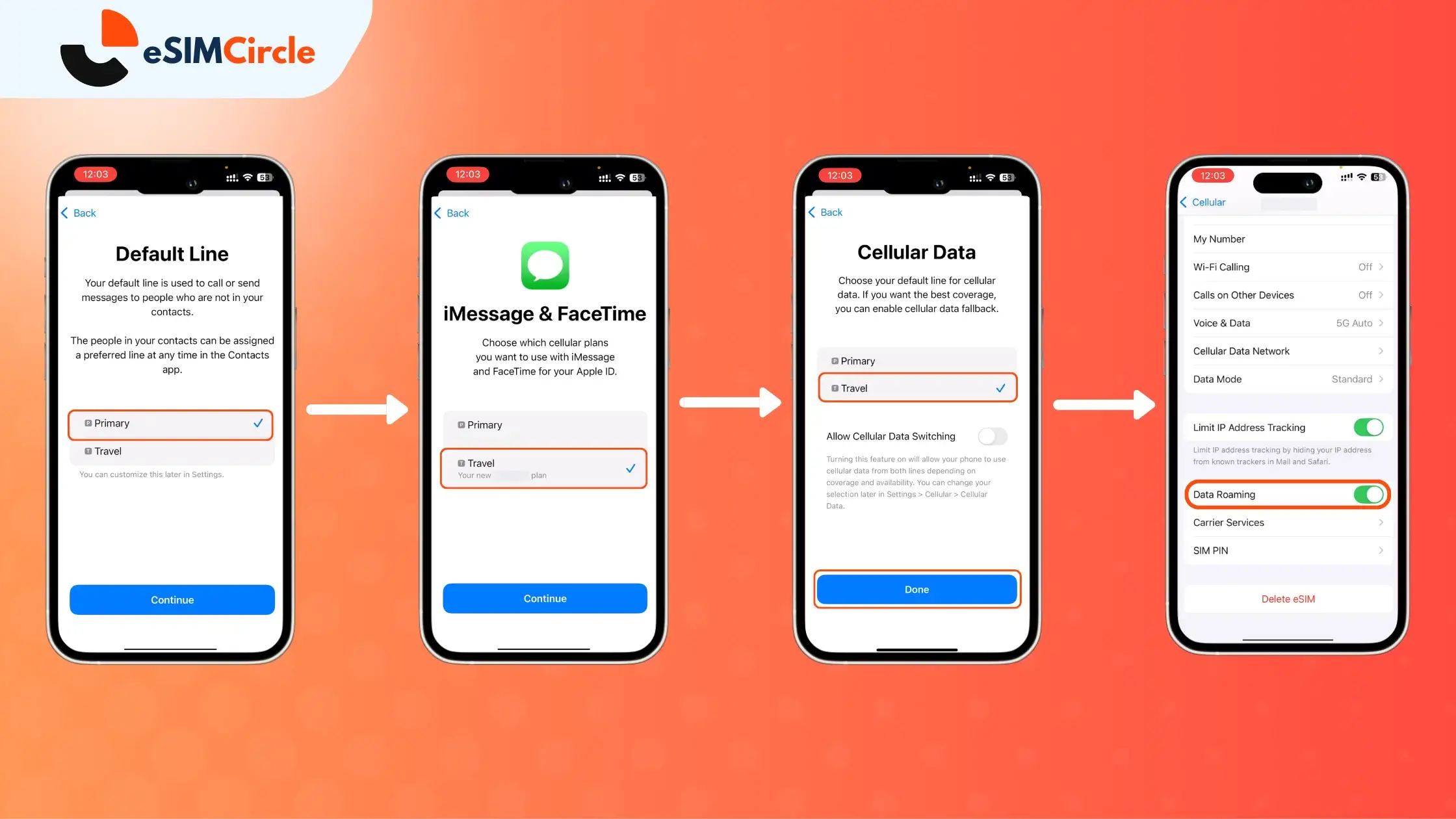
6.2 Activating an eSIM on Android Devices Using a QR Code
*Exact steps may vary slightly by brand, but the process is similar across most Android phones
- Access Settings → Connections → SIM Manager
- Tap on Add eSIM → Scan the QR code from your service provider
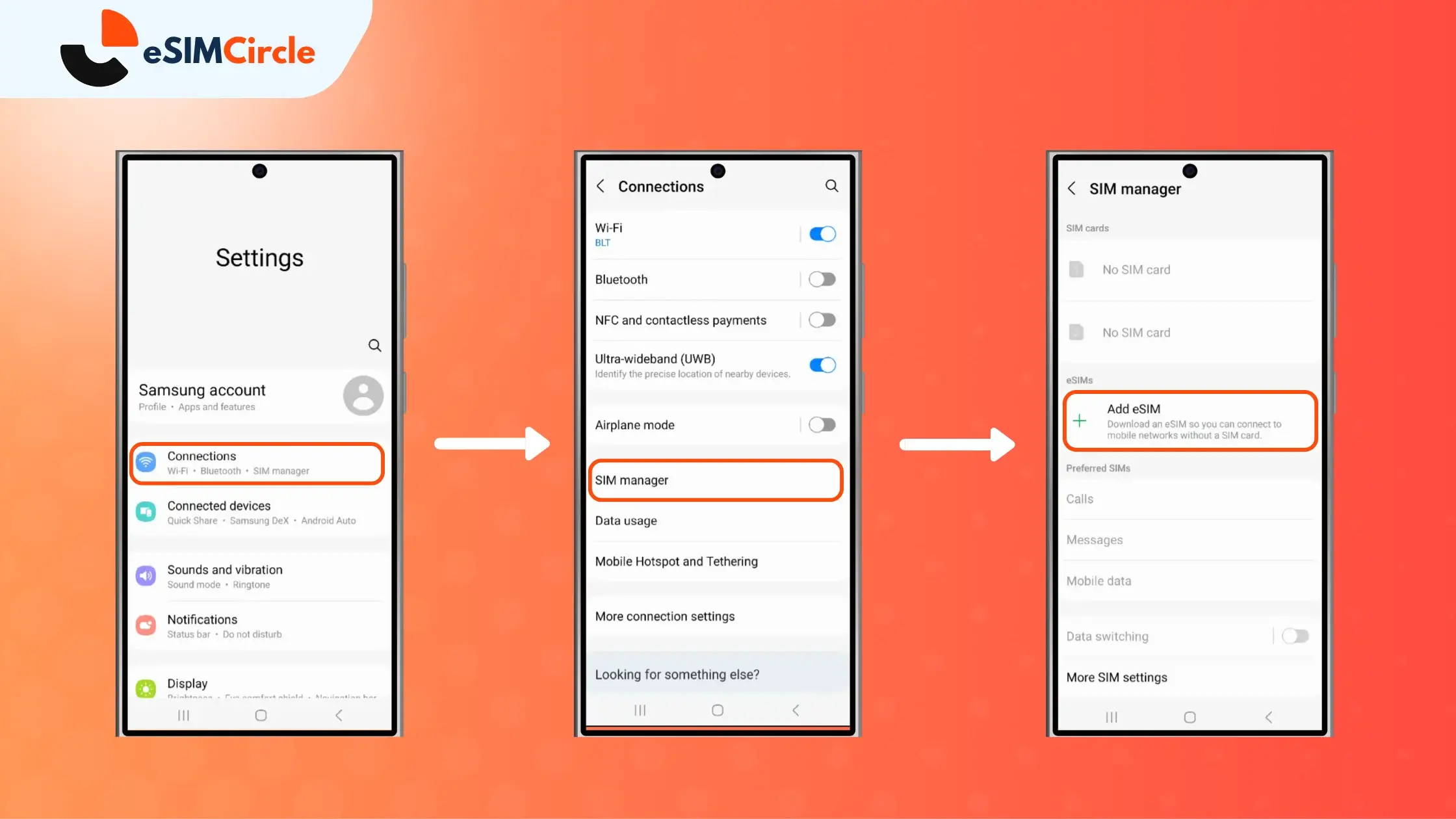
- Scan the QR code sent to your email to download your digital SIM card/ virtual SIM card
- Wait while your device checks the eSIM information
- When prompted, tap Add to confirm and activate
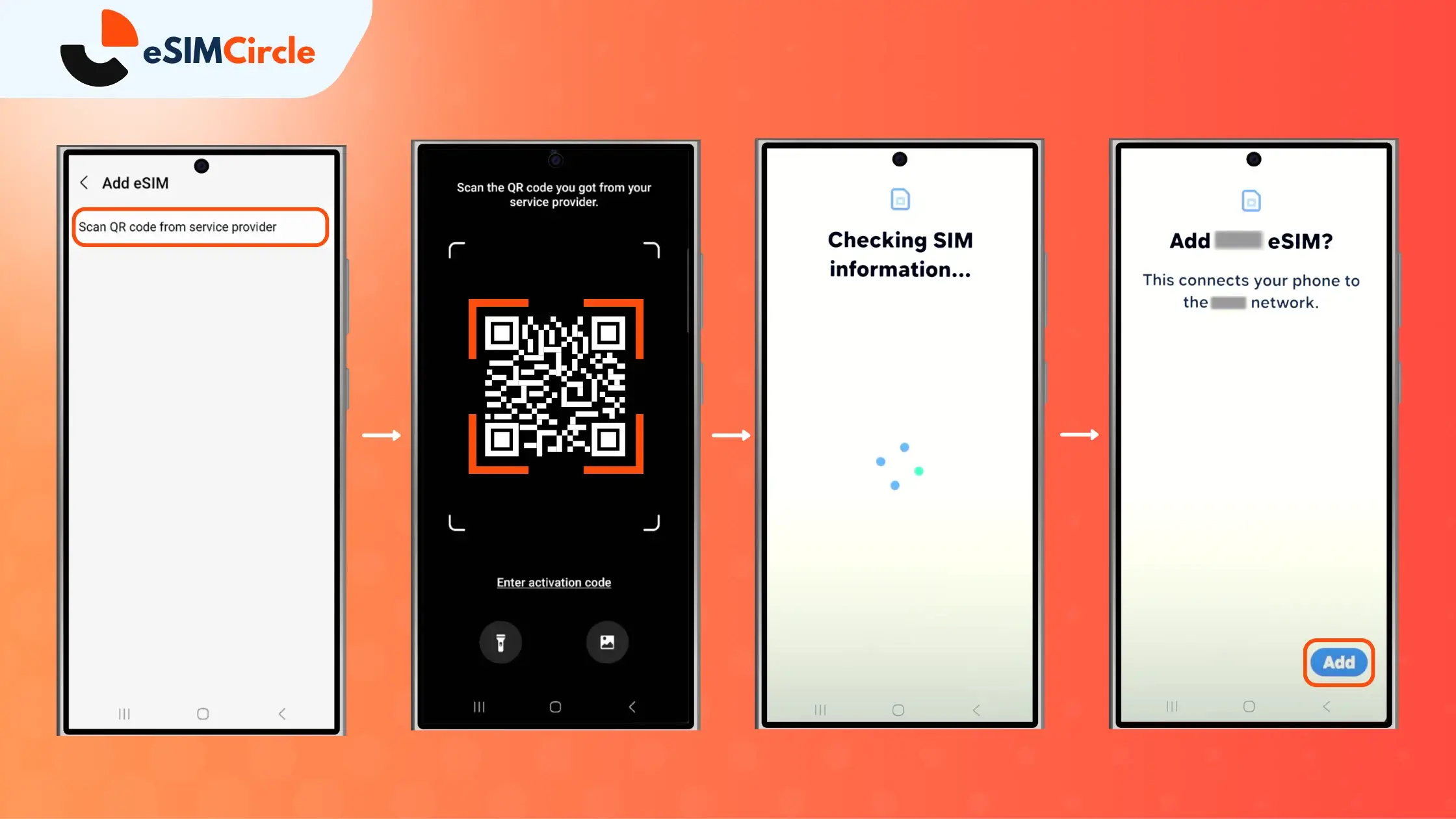
- After installation, activate your eSIM by going to Settings → Connections → Mobile Networks, then enable Data Roaming. Don’t forget to turn on Mobile Data for your eSIM as well
7. Conclusion
eSIM technology integrates directly into devices, enhancing cellular connections with greater flexibility and efficiency, especially for international travelers. It simplifies the user experience by reducing clutter from physical SIM cards and allows instant activation through local carriers or platforms like eSIMCircle. As tech evolves, eSIMs will play a vital role in global mobile connectivity, making it essential for digital nomads and business professionals.
8. FAQs
1. Can I switch between a SIM card and an eSIM?
Yes, many modern devices support both an eSIM and a physical SIM card, allowing users to switch between them effortlessly. This flexibility is particularly useful for travelers who want to maintain their home number while adding a local eSIM for data in another country.
2. What will happen to my physical SIM card once I set up an eSIM?
Once your eSIM is activated, your physical SIM can be removed or retained without affecting the service on your eSIM profile. You can switch back and forth depending on device compatibility or preferences, but what is an eSIM is designed to replace the need for physical cards entirely.
3. How much does an eSIM cost?
The cost varies depending on the provider, plan, and region. Many services, like eSIMCircle, offer affordable prepaid plans, including options for unlimited data with flexible durations. Prices are typically comparable to traditional SIM plans but offer added convenience.
4. Will my phone number change if I activate an eSIM?
Not necessarily. When getting an eSIM, you can choose to keep your existing number or switch to a new one provided by your service. It’s entirely up to your preferences, and providers facilitate this process seamlessly.
5. Do eSIMs have better signal?
eSIMs generally do not affect signal quality directly; signal strength depends on your device, network infrastructure, and region. However, how does eSIM work allows for quicker switching between networks and better options for choosing strong signals, especially in remote or crowded locations.


